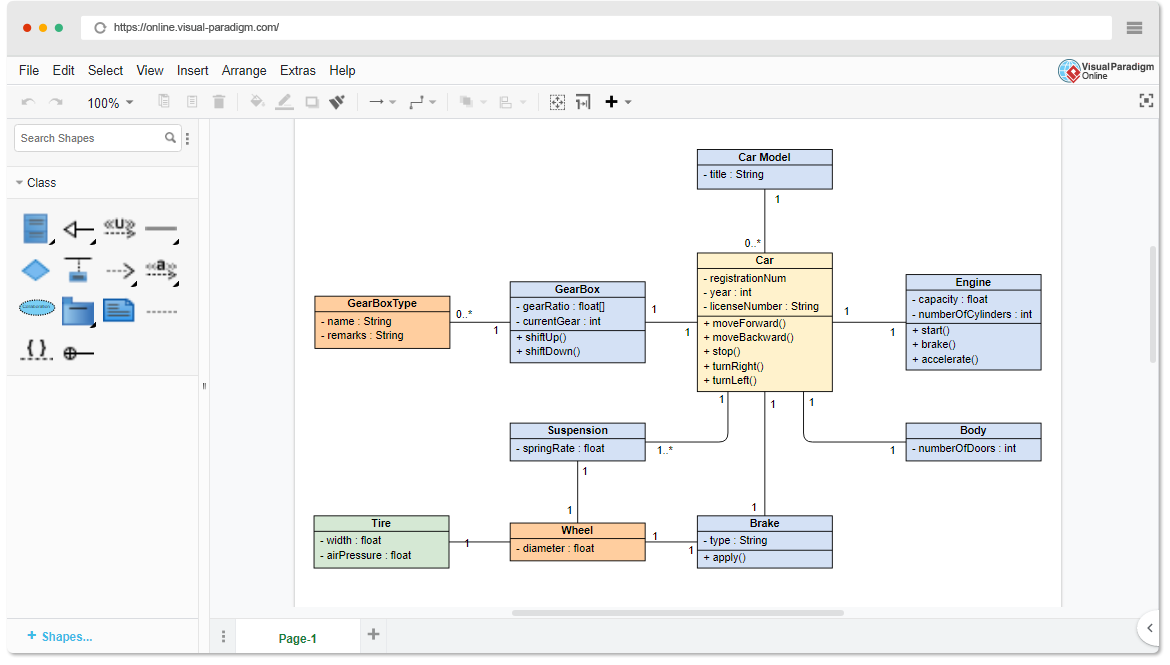Edit and convert casual drawings into detailed modeling diagrams

Visual Paradigm is not just for modeling; it also supports casual drawing. Modeling in Visual Paradigm involves detailing the properties of shapes to support activities like code engineering, consistency checks, model transitions, and document generation. In contrast, casual drawing is more relaxed, focusing on creating shapes and connectors directly from your ideas. Visual Paradigm offers over 150 types of diagrams, including charts and business graphs, which you can create on both desktop and web browser platforms.
Click here for the list of diagram types.

Casual drawings can be imported into Visual Paradigm Desktop and converted into modeling-based diagrams. Start with a casual diagram and then elaborate on it for more detailed modeling purposes. This enables you to further detail the shapes and perform activities such as code engineering, model structuring, transitions, and document generation.

Here is a list of diagrams that can be imported into Visual Paradigm Desktop for further modeling.
| Enterprise | Professional | Standard | Modeler | Community | |
|---|---|---|---|---|---|
| UML & Software Development | |||||
| Use Case Diagram | |||||
| Class Diagram | |||||
| Activity Diagram | |||||
| Sequence Diagram | |||||
| Deployment Diagram | |||||
| State Machine Diagram | |||||
| Component Diagram | |||||
| Package Diagram | |||||
| Data Flow Diagram | |||||
| Entity Relationship Diagram | |||||
| Business / Enterprise | |||||
| BPMN Business Process Diagram | |||||
| ArchiMate Diagram | |||||
| Project Management | |||||
| Enhanced PERT Chart | |||||
| Organizational | |||||
| Organization Chart | |||||
| Work Breakdown Structure | |||||
| Brainstorming | |||||
| Mind Mapping |